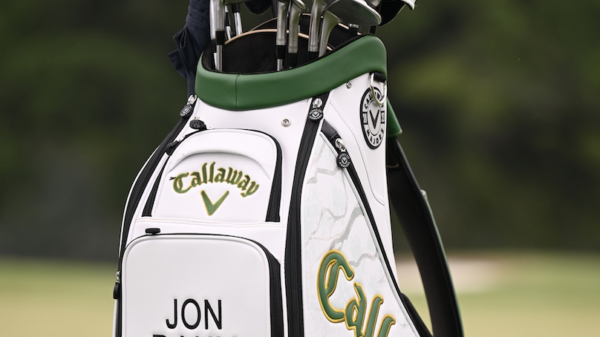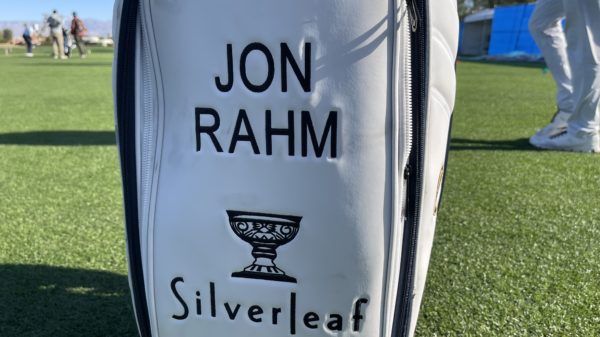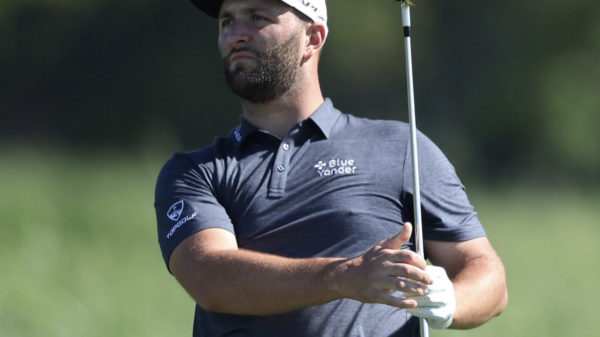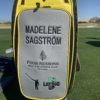Ok…..THIS IS ABSOLUTE GOLD.
Last Tuesday, I did an AMA with The Hackers Paradise, and I answered a pile of questions on all things from fitting, to the Tour and even my own game. There was a recurring topic that kept coming up…Swingweight.
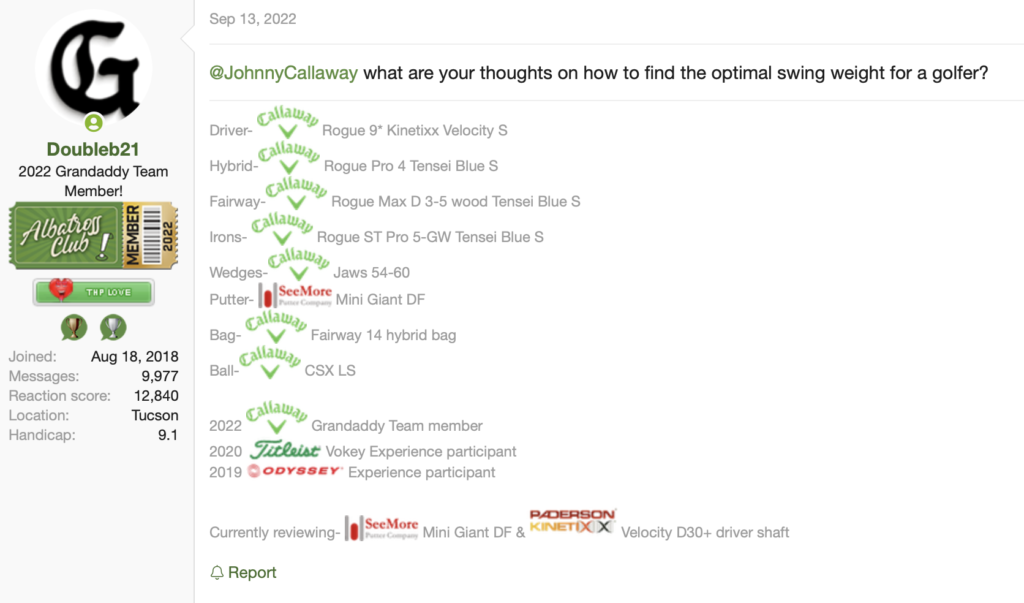
What is it? Why is it important? And who should concern themselves with it.
The last question is easy, EVERYONE.
The first question is also quite simple, its the measurement of the clubs balance point. If the head “feels” heavy the swing weight is probably higher if the head “feels” light, the swing weight will measure lower. D4 heavy VS D0 light.
Make sense?
The plan was to ask my colleague on TOUR to help explain how it relates to his job on TOUR, and what he gave me in return was some next-level information that I will use for reference in the future. It’s that good. Callaway Tour Performance Rep Kellen Watson went in DEEP.

So here we go…
JW: How important is SWING WEIGHT?
Kellen: Swing weight is an essential tool when fitting as well as in the building of golf clubs. Swing weight for the better player means feel. If a Tour pro does not have the right feels, that club or clubs will immediately be dismissed because something is “just off.”
On the contrary, the average player may not notice the change from a D1 swing weight to a D4 swing weight, but in terms of ball flight, starting line, and contact, the swing weight may be the end all.
For example, the average consumer/weekend player often changes their grips due to wear and tear. Sometimes, they may try a friend’s grip and want to give them a go. They usually do not have the insight to understand that this “slight” change may affect the club’s swing weight and overall weight, which could change the “feel” of an entire set.
Example: Player A changes the grip on his driver. He goes from Grip A, at 51 grams, to Grip B, at 61 grams. In terms of swing weight, the clubhead becomes a lighter part of the golf club which can directly affect the playability of the shaft. Usually, a lighter clubhead will make the shaft play a touch stiffer, causing a different loading and unloading of the shaft. Going from Grip B to Grip A will make that clubhead feel much heavier, and In turn, the shaft may play a touch softer and kick a touch more in the unloading process.
New grips may not seem like a big deal but they can be if the variables change.
As in grips, the shaft’s weight and balance point are deciding factors in the determination of swing weight. For instance, a counterbalanced part will require more clubhead weight to satisfy an ideal swing weight. A 70-gram part will require a clubhead weight change if moving away from a 60-gram part—every detail matters to getting a golf club dialed in for a player. This is why working with a good fitter and builder is so important.
JW: How do you measure the proper swing weight during a fitting?
Kellen: Regarding fitting Tour pros, swing weight preference will be concluded from historical specifications. There are many exceptions to this rule, though. The center of gravity of a club head can play a massive factor in terms of feel. As we said before, feel is a direct reflection of swing weight.
Example: Player testing Titleist irons (Club A), which are historically on the lighter side head weight-wise, vs. Apex TCB (Club B). With a central CG, TCB irons will generally feel heavier loading and unloading and at contact than lighter iron heads, without the fortune of having a more central CG built with tip plugs. In a situation like this, the builder was asked to decrease swing weight in the Apex TCB to create the same feel as his Club As (Titleist).
Ideally, for the weekend player in the height range of 5’6” to 6’1”, demo clubs will tend to be around D1-D4. This is where they land and is essentially what the general population should play in terms of swing weight.
When it comes to Tour pros, the instant they pick up a new club or make the first swing, they will be able to tell you if the swing weight is correct. The contact, loading, unloading, and ball flight are all things these guys are dialed in on.
“THE FIRST SWING TELLS A STORY…A LONG STORY.” The weekend warrior will comment that, even though the ball was struck well, the club feels too heavy or too light. These small comments go a long way with the average player as well. If we continue to look at the nuances of golf clubs in the standard consumer fitting, we can come to that magical Goldilocks swing weight that gives them that euphoric feeling and makes them want to come back. I understand that with the many options that are available these days, in terms of shafts and grips, it can be difficult to zero in on a demo club that provides the same feels as those that will come in the box at your front door, but learning what swing weight is right for you, definitely helps.
Few more nuggets on Swingweight:
- Hot melt that is offered by some higher-end shops and always on the Tour trailers can play a role in what a swing weight may be. For instance, you will achieve a swing weight with less hot melt in the toe vs. a driver’s heel. This may not be the case for a FW wood or a hybrid because the heel-to-toe length is much shorter. This example will only be highlighted on the classic “hanging” swing weight machines, i.e., Kenneth Smith, GolfWorks, Mitchell, etc.
- Allen Doyle (former Walker Cup and Champions Tour Player) used and possibly still uses a lob wedge that weighs in at E1. In terms of the standard wedge, this is heavy. In his case, this swing weight gave him a better feel on the shorter/half shots that needed to be very specifically landed/placed.
- Putters…what can we say. Putters are putters. They historically were lighter in swing weight; then, the industry flipped this on its head. You can look back at those made in the 90s and realize they go from C9 to D9 with small, either higher or lower variances. I believe these days, we see an increase closer to the mid-Es when it comes to standard swing weight. Feel. Feel. Feel. It all comes down to feel. With that being said, the putting stroke is obviously different than any other club in the bag. This allows the fitter and player to hone in on swing vs. overall weight. Building putters is often a tough task. You may hit overall weight and fail to hit swing weight and vice versa, but at some point, the player will decide which is more important without even knowing…great transition.
- Overall weight vs. swing weight – they don’t really have anything in common on full swing clubs because swing weight relies on:
- Balance point
- Grip
- Center of gravity
- Tour Swing weight average will land around D3. It’s an interesting concept that most Tour pros will not go lighter because coming down the 18th with money on the line, a lighter club to them will feel like they have less control of the face. Factor that in with the adrenaline that is created in these moments, and sometimes you have the recipe for complete disaster.
The Takeaway:
Kellen hit the nail on the head regarding the importance of swingweight. It’s the central nerve of any golf club and, in most cases, the deciding factor of what makes a golf club a gamer. We all have that one club in our set that we always hit well. In my experience, if the swingweight is dead on for me, my body responds properly. Bowling balls, baseball bats, tennis rackets, hockey sticks, etc., have different weights to fit the user. Golf is no different.
Before your next fitting, pick out the club in your bag that always seems to perform and share that with the fitter. Get the swingweight of that club, and it will give them a nice sandbox to play in to ensure all 14 clubs become gamers.
Happy Hunting
JDub



